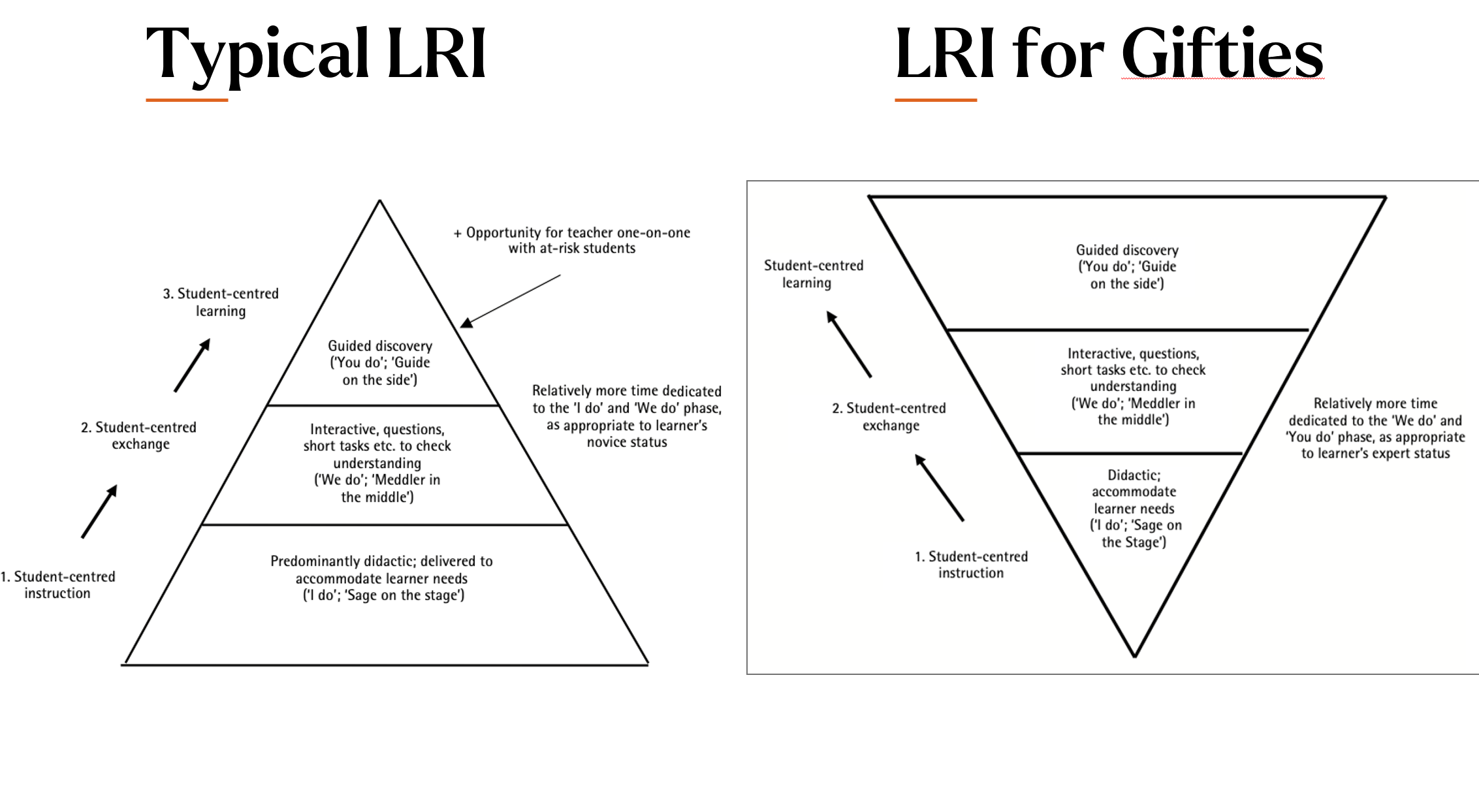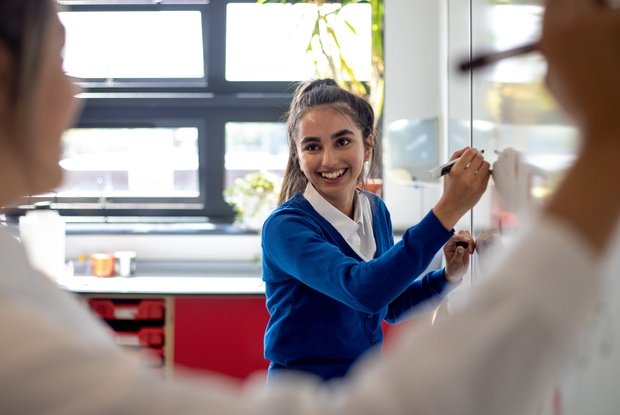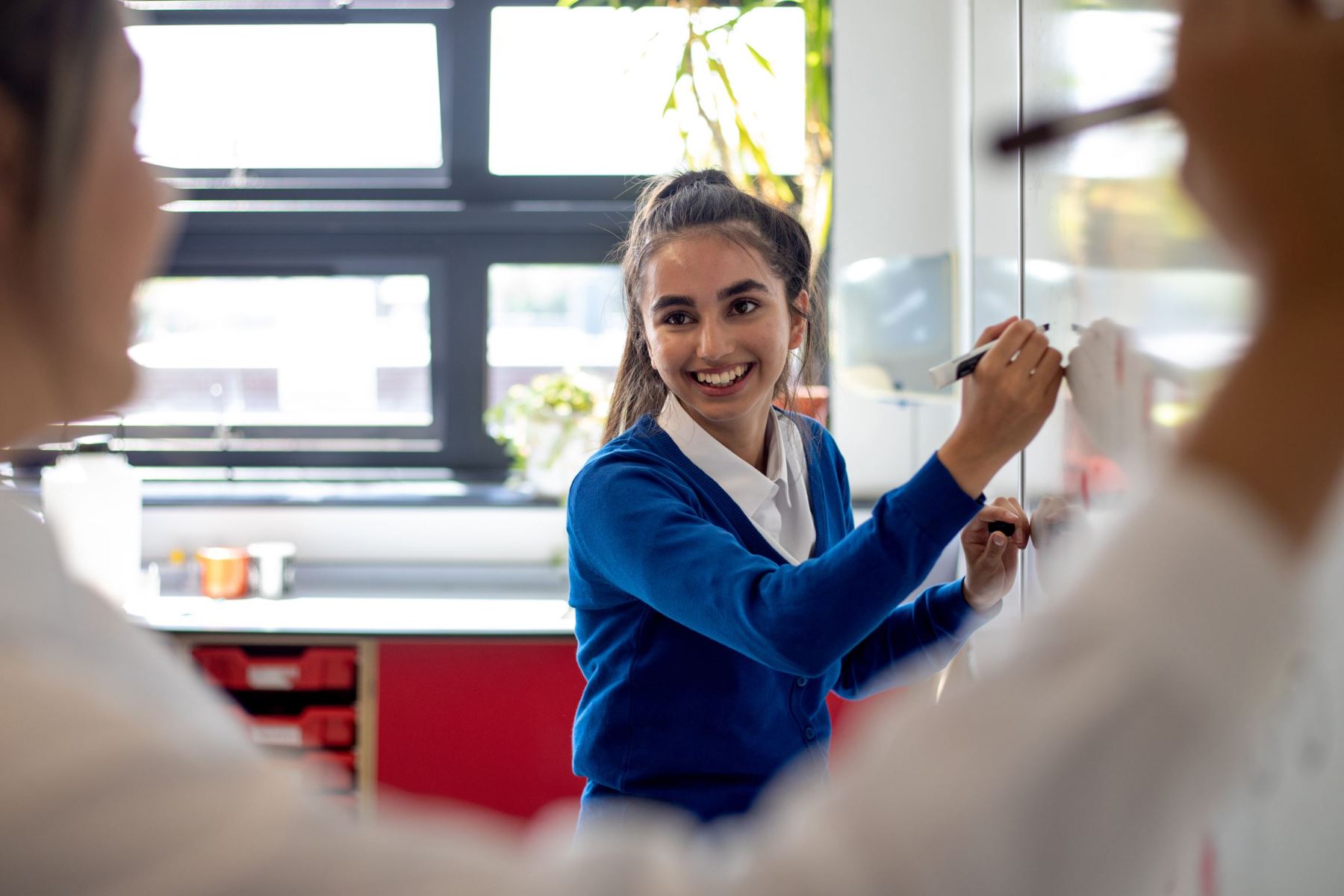The lead educator for gifted education at St Philip’s Christian College in Newcastle has called out a curious contradiction in how gifted and talented children are thought to be best extended in the classroom.
While we know novice learners master new skills and knowledge most effectively via explicit instruction, the common thinking in gifted education is that inquiry learning is the way to go, Barton says.
“On the one hand, we're encouraging an inquiry approach, and on the other hand, you're looking at teaching students very explicitly and efficiently to manage the constraints of working memory.
“So, there seems to be a ‘never the twain shall meet’ with these two approaches to teaching.
“Should we be using an explicit pedagogy with carefully scaffolded explanations, worked examples and guided examples, lots of opportunities for practice and meaningful feedback given by an expert, and lots of repeated retrieval?
“Or, should we be using a gifted pedagogy which is more focused on inquiry and on developing skills rather than knowledge, and making generalisations across domains?” she poses.
Barton’s interest in gifted education was initially sparked when her first child started school.
“[She] was quite bright and was challenged in Kindergarten, but when she got into Year 1, she had already pretty much completed the curriculum, and then had do the same thing again.
“It was like a little light turning off in her.”
A relative latecomer to teaching, Barton went on to pursue a masters in gifted education at UNSW. It’s a field that is grossly overlooked in Australian education, she says.
“There seems to be a lot of structures and processes and support to facilitate students who are at the lower performing end, but there is relatively little or often nothing for children who need more extension,” she says.
The bulk of the literature that guides teachers’ pedagogy in teaching gifted students comes from the US, and it clearly promotes inquiry-based learning over explicit instruction, Barton notes.
Here there’s a focus on getting students to solve real-life problems, often drawing on their imagination to do so, she says.
“So, using things like the Maker Model, the Williams Model, integrated curriculum models, and they're really highly focused on the students’ interests.
“They have the students acting as experts in the field, focusing on creative and critical thinking, using intuitive approaches to problem solving, brainstorming techniques.
“They’re really giving students lots of freedom of choice in the topic that they're studying, the methods that they're using, the products that they're generating – and often using real life problems.”
These approaches avoid domain-specific learning, the educators says, which runs counter to what we know works best for the average child.
But when teaching young gifted children who do not yet have a sizeable chunk of content knowledge lodged in their long-term memory, inquiry learning can fall short, Barton suggests.
Thankfully, the educator has come across a solution.
“I encountered Andrew Martin's work on load reduction instruction (LRI), and everything seemed to fall into place then,” Barton says.
LRI is an instructional approach designed to manage the cognitive burden on students in the initial stages of learning.
As students’ fluency and automaticity develop, they then engage in guided independent learning.
Barton says that learners are taken through five sequential steps in LRI.
“The first step is reducing the instruction difficulty when they're initially learning things. So breaking things down into really small chunks that you explicitly teach.
“The second part is providing the support and scaffolding so that they can learn it. And then thirdly, lots of opportunities for practice of those skills,” Barton explains.
The fourth step involves quality feedback and correction, before students move onto the last phase: guided independent learning.
“Step 5 is like the ‘you do’, where they're finally onto doing the tasks themselves. It's at that point that they can use creative and deep reasoning and learn with more independence,” Barton says.

Barton's re-worked LRI model proposes gifted students benefit from less time spent engaged in explict instruction and more time spent in the 'you do' phase. IMAGE: supplied.
When working with gifted students, Barton says the idea is to ‘flip the triangle’ so that the amount of time spent on explicit instruction is a lot less.
“You can't do away with the explicit instructions for gifted students. They still need teaching explicitly.
“However, they can move through it a lot faster. They need far fewer repetitions of things. You can commence fading, the reduction of prompts and support, much earlier and also fade at a much faster pace. You only need to tell them once or twice, and they've picked it up and then they can move straight into the application or problem-solving elements of learning.”
At St Philip’s, Barton has noticed the ‘expertise reversal effect’ play out with gifted students.
“If they don't continue to be challenged, their performance actually drops off,” she says.
“They should start off learning explicitly – but you get to a point where there's a threshold with the expertise reversal effect, where it's actually more effective for them to learn through those inquiry and problem solving methods.
“They're at that threshold … because they've already transferred enough of that information into their long-term memory to be able to withdraw it all instantaneously and apply it across domains.”
A raft of myths and misconceptions continue to plague gifted education, Barton laments.
These range from the view that it’s elitist, to the assumption that it’s very easy to teach these children because they simply “suck up knowledge”, Barton says.
“It's actually quite hard to keep up with them,” she laughs.
“It's hard differentiating for them. They come with lots of kind of quirky character attributes as well – we know from research that they have particular traits that can be quite intense, and they can have these perfectionist qualities, a strong sense of social justice, and you have to tailor all your teaching to manage that and support them with an affective program as well.”
Barton is not the first to warn that our gifted students are being short-changed and a huge mentality shift around their education is long overdue.
PISA 2022 results show our high performing students today are achieving at lower levels than their counterparts when the international assessment started in 2000.
Dr Jae Yup Jared Jung, an expert in gifted and talented education from UNSW Sydney, has been advocating for change.
“Just because [gifted students] are able to achieve minimum standards with much less effort than other students, does not mean that their educational needs are being met,” he told EducationHQ previously.
Barton says that while NSW announced a new gifted education policy in 2021, there hasn’t been much information or support provided to see it implemented on the ground in schools.
“I think there's probably an appetite amongst teachers to try and cater for this tranche of the student population, but it's the time and resources to put into it,” she adds.
The statistics that hang over gifted children ought to be front of mind for policymakers, Barton concludes.
“So many students don't even finish school, those gifted kids that fall in the top 10 per cent of ability - about one in five don't finish school because it's too unbearably boring for them.
“It's not set up to meet their needs.”














